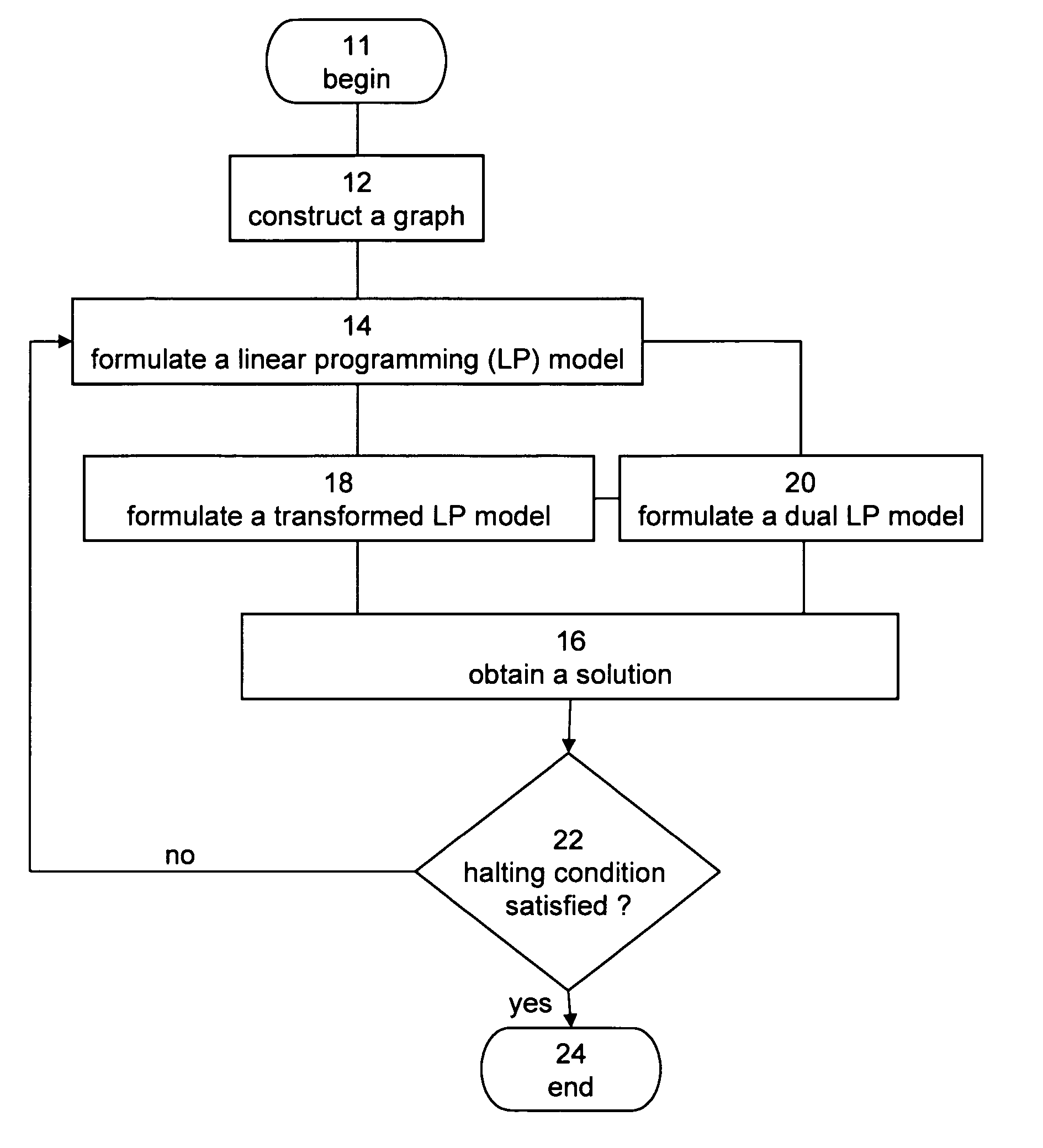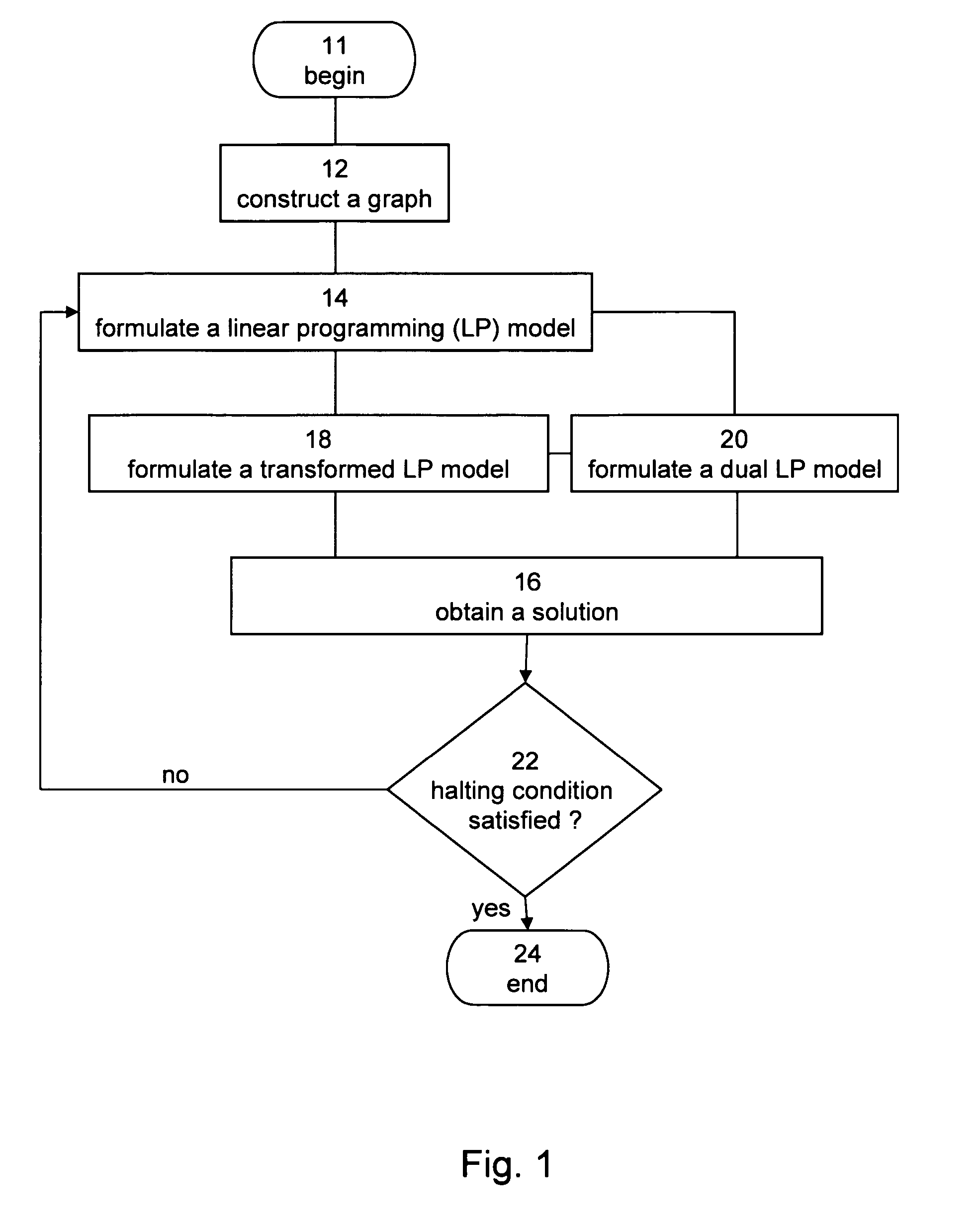Method and Apparatus for Optimizing Multidimensional Systems
a multi-dimensional system and optimization method technology, applied in the field of optimization, can solve the problems of insufficient one-dimensional flow networks for many engineering applications, complex mathematical operations, and computation using non-denominational number representations,
- Summary
- Abstract
- Description
- Claims
- Application Information
AI Technical Summary
Benefits of technology
Problems solved by technology
Method used
Image
Examples
example 1
[0109] Following is a description of a linear programming algorithm which employs an iterative procedure, according to various exemplary embodiments of the invention. The algorithm is schematically illustrated in the flowchart of FIG. 6.
[0110] For each given original optimization problem the algorithm constructs a transformed optimization problem that is easier to be solved. Once solved, the solution of the transformed problem is augmented to the solution of the original problem after multiplication by the augmentation coefficient, θ.
[0111] The algorithm begins at step 60 and continues to step 61 in which the original LP model is formulated. The LP model includes inequality constraints for the model variables and an objective function which is to be optimized. The algorithm continues to step 62 in which an initial solution is given to the variables, such that the constraints are satisfied. Suitable initial solution is, without limitation, when all the variables are set to be equal...
example 2
[0117] The present example demonstrates the determination of a maximal load of a two dimensional truss, using the algorithm described in Example 1. The truss is illustrated in FIG. 7 and comprises three rods, designated 1, 2 and 3, respectively oriented at angles of 0°, 30° and 60° above the horizontal direction. The compressive and tensile yielding of all the truss rods of the present example is equal to 12,000 N. A vertical external force P acts on a joint A of rods 1, 2 and 3.
[0118] The initial feasible solution is set to be P=F1=F2=F3=0.
[0119] For the first iteration, there are no saturated rods, thus in the transformed truss, there is no restriction on the direction of the forces in the rods. One of the possible solutions, shown in FIG. 8a, is obtained by removing rod 3 from the truss and applying on it a unit external force.
[0120] The analysis of the truss of FIG. 8a results in P′=1 N, F′1=1.756 N and F′2=−2.02 N. The updated LP model is obtained by multiplying these forces...
example 3
[0130] The present example demonstrates the determination of a maximal load of an additional two dimensional truss, using the algorithm described in Example 1. The truss is illustrated in FIG. 9a and comprises ten rods, designated by numerals 1-10. Rods 1, 2, 9 and 10 are oriented along the x direction, rods 3 and 6 are oriented along the y direction and all other rods form a 45° angle with the x and y axes. The compressive and tensile yielding of all the truss rods of the present example is equal to 12,000 N.
[0131] In the first iteration a zero force is assigned to all the rods, hence sets J± are the empty sets. The truss is stable hence no movement of the joints can occur without causing deformation of truss members. The dual TLP model is therefore not optimal.
[0132] The solution to the TLP in the first iteration is shown in FIG. 9b. The solution is obtained by removing rods 5 and 7 and solving the obtained truss. The corresponding value for θ is 4,000.
[0133]FIG. 9c shows the t...
PUM
 Login to View More
Login to View More Abstract
Description
Claims
Application Information
 Login to View More
Login to View More - R&D
- Intellectual Property
- Life Sciences
- Materials
- Tech Scout
- Unparalleled Data Quality
- Higher Quality Content
- 60% Fewer Hallucinations
Browse by: Latest US Patents, China's latest patents, Technical Efficacy Thesaurus, Application Domain, Technology Topic, Popular Technical Reports.
© 2025 PatSnap. All rights reserved.Legal|Privacy policy|Modern Slavery Act Transparency Statement|Sitemap|About US| Contact US: help@patsnap.com



